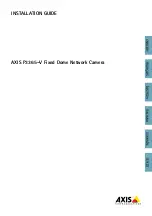
ADSL2+ (802.11g) (VPN) Firewall Router
Chapter 4: Configuration
78
IPSec VPN Connection
Name:
A given name for the connection (e.g. “connection to office”).
Local Network:
Set the IP address, subnet or address range of the local network.
Single Address:
The IP address of the local host.
Subnet:
The subnet of the local network. For example, IP: 192.168.1.0 with netmask
255.255.255.0 specifies one class C subnet starting from 192.168.1.1 (i.e. 192.168.1.1 through
to 192.168.1.254).
IP Range:
The IP address range of the local network. For example, IP: 192.168.1.1, end IP:
192.168.1.10.
Remote Secure Gateway Address (or Domain Name):
The IP address or hostname of the remote VPN
device that is connected and establishes a VPN tunnel.
Remote Network:
Set the IP address, subnet or address range of the remote network.
IKE (Internet key Exchange) Mode:
Select IKE mode to Main mode or Aggressive mode. This IKE
provides secured key generation and key management.
Hash Function:
It is a Message Digest algorithm which coverts any length of a message into a unique
set of bits. It is widely used MD5 (Message Digest) and SHA-1 (Secure Hash Algorithm) algorithms.
SHA1 is more resistant to brute-force attacks than MD5, however it is slower.
MD5:
A one-way hashing algorithm that produces a 128−bit hash.
SHA1:
A one-way hashing algorithm that produces a 160−bit hash
Encryption:
Select the encryption method from the pull-down menu. There are several options,
DES
,
3DES
and
AES (128, 192 and 256)
. 3DES and AES are more powerful but increase latency.
DES:
Stands for Data Encryption Standard, it uses 56 bits as an encryption method.
3DES:
Stands for Triple Data Encryption Standard, it uses 168 (56*3) bits as an encryption
method.
AES:
Stands for Advanced Encryption Standards, you can use 128, 192 or 256 bits as















































